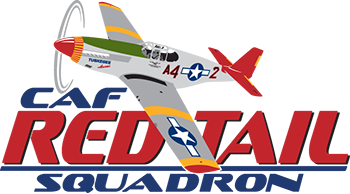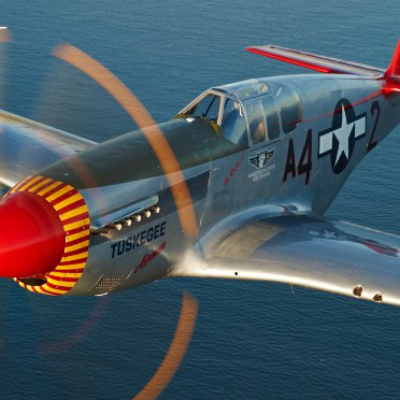 The squadrons
The squadrons
In all, 992 men completed the Tuskegee advanced flight training program and earned their wings. As pilots graduated, the majority would be assigned to one of four fighter squadrons: the 99th, 100th, 301st and 302nd. These four squadrons would become part of the 332nd Fighter Group. A total of 355 pilots were sent to the warfront in North Africa and Europe (the Mediterranean Theater) as fighter pilots. Sadly, 80 gave their lives and 31 became prisoners of war.
The first military flying unit of the Tuskegee Airmen was the 99th Pursuit Squadron but was shortly renamed the 99th Fighter Squadron. In March of 1941 it was activated at Chanute Field in Illinois without any pilots as there were no graduates from Tuskegee at that point to populate the squadron. It received its first pilots in March of 1942 at Tuskegee Army Air Field, but it would be several more months before enough pilots were added to be considered an operational flying unit. Col Benjamin O. Davis Jr., one of the first graduates of flight training at Tuskegee, would go on to become the squadron’s most famous commander.
The 99th Fighter Squadron was first sent to North Africa for combat duty in April 1943. The transition from training to actual combat wasn’t always smooth given the racial policies within the military, as well as the personal prejudices of many enlisted personnel and line officers. However, the Airmen overcame the obstacles posed by racism through hard work and commitment to their role as military aviators. After serving in North Africa, the 99th moved to Sicily and the mainland of Italy to support Allied campaigns there. It was later assigned to the 332nd Fighter Group, which had three other squadrons, and together they later took part in raids on Germany and other parts of central Europe.
Although the Airmen flew courageously and well, it was as bomber escorts on missions deep into Germany and surrounding areas that they really made a name for themselves. They gained a widespread reputation for staying with the bombers and successfully protecting them during their dangerous missions. Other fighter squadrons were known to be more interested in going after enemy aircraft for an aerial victory, but the Tuskegee Airmen followed their strict orders to stay with the bombers, and gained notoriety for their success at protecting these aircraft from being shot down.
Like all fighter groups, the 332nd Fighter Group flew aircraft with distinctive paint schemes to assist with identifying friend from foe, and the 332nd chose to paint their tails bright red. It wasn’t long before the bomber pilots were requesting the Tuskegee-trained “Red Tail Angels” to fly escort for them. The Tuskegee Airmen flew a number of different fighter aircraft, but they are most closely associated with the fast and powerful P-51 Mustang.
Some of the pilots that graduated from the Tuskegee program were trained to fly bomber aircraft. Other important bomber crew positions and support personnel were also trained, but at other locations. Those prepared to fly and support the bombers were assigned to one of the four bomber squadrons of the 477th Bombardment Group at Selfridge Field near Detroit, Michigan, activated in early March 1945. However, the war ended before the squadrons were sent overseas. The officers of the 477th play an important role in history nonetheless. In April of 1945, many of the Tuskegee Airmen of this group attempted to integrate a white officers club and were arrested in what came to be called the Freeman Field Mutiny, asserting their rights to be treated with the same dignity as their white counterparts.



